A Different Okeechobee
Famed Florida fishery may be tough to crack for first Southeastern Division event
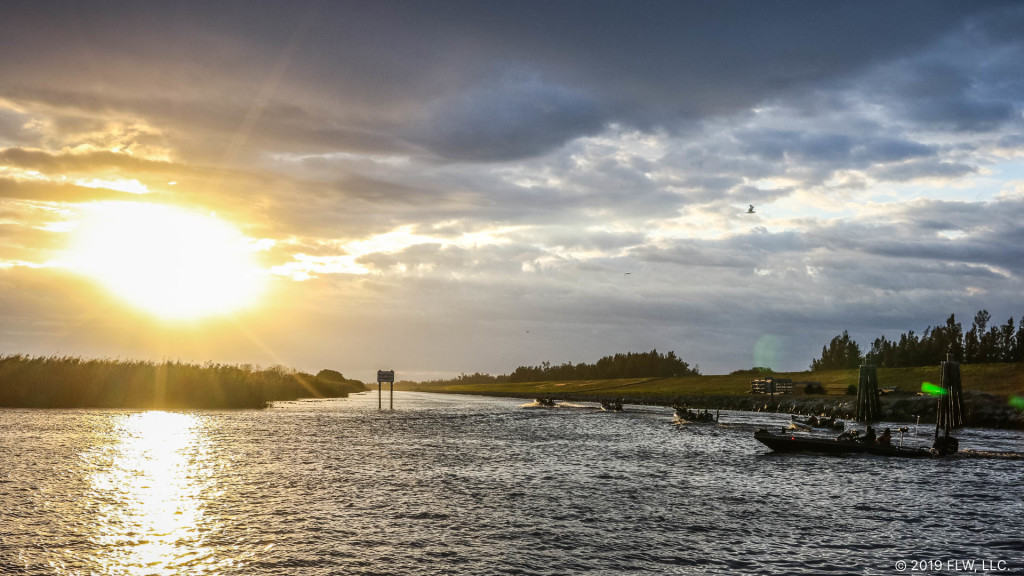
A mild breeze and lower temperatures greeted the 238 pros and co-anglers this morning who blasted off onto Lake Okeechobee for the first Costa FLW Series Southeastern Division event of the year, which is presented by Power-Pole and hosted by Roland & Mary Ann Martin’s Marina & Resort and the Hendry County Tourism Department Council.
While the winning pro will take home more than $100,000 if he’s Ranger Cup qualified, also at stake this week are valuable points to qualify for the Costa FLW Series Championship to be held on Lake Cumberland Oct. 31–Nov. 2.
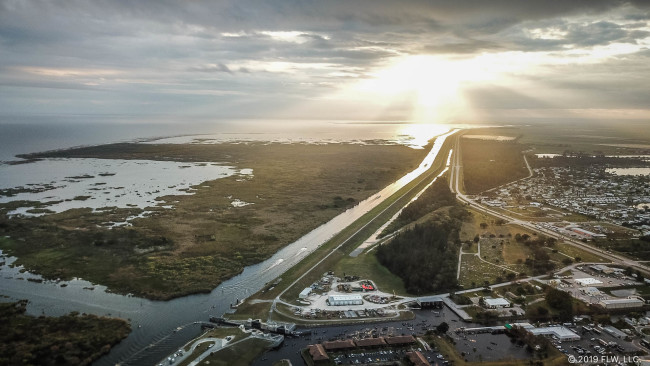
About the fishery
Other than the rim ditch that circles the lake and some offshore rock piles, Okeechobee is essentially a big bowl of shallow grass. Filled with mats, cattails, hydrilla, pads, reeds, hay grass and almost every other kind of aquatic vegetation, the Big O can be daunting for the uninitiated.
While you could catch a bass almost anywhere on Okeechobee, the north and south sides are the most popular areas. Up north, flipping and punching reeds, mats and cattails and throwing a ChatterBait in hydrilla are extremely popular tactics. On the south end, anglers tend to flip cattails and wind Zoom Ultravibe Speed Worms and swim jigs through the extensive fields of hay grass.
Okeechobee is loaded with Florida-strain largemouths, which means even a slight cooldown can shut down a bite in a hurry. Their fickle nature will be felt this week since numerous cold fronts have riddled the region for the last several weeks.
Unlike some Florida lakes, the Big O has comparatively few double-digit bass, but it has a healthy population of keepers and more 6- to 8-pounders than most lakes in the country. As with any Florida lake, getting a big bite or two throughout the course of the tournament is a game-changer.
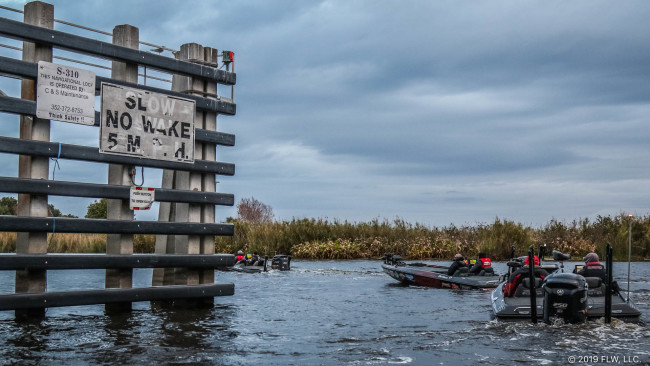
Current conditions
The lake is currently sitting at 12.65 feet above sea level, which is actually an uptick from the downward trend its been on since September of last year. While low water makes for some tricky navigation in certain areas, it also means the bass can’t access the far reaches of the swamp where they would be out of reach of anglers. Therefore, when you find fish you’re likely on a pretty good herd of them.
Probably the biggest issue facing the field this week is the sheer amount of dirty water. Hurricane Irma tore through Okeechobee back in September 2017, and because of it, a lot of grass was ripped out of the pond. Wind-blown areas in the past could be protected due to the amount and density of vegetation, but now some areas are left exposed to howling wind and waves. Lack of grass paired with lower water means that the lake muddies up easier and takes longer to clear up.
The warming trend in the forecast may also help heat the bite up some. Today, the high is expected to be close to 70, with upper 70s for the final two days of the event. The bonus is that the overnight lows should only dip around 60, which is 10 to 20 degrees warmer than what the area experienced over the last week. It may not be enough to help ignite a huge spawning wave, but it shouldn’t hurt things. Lastly, the wind is supposed to blow at a decent clip out of the northeast today, but will taper off for the remaining days of competition.
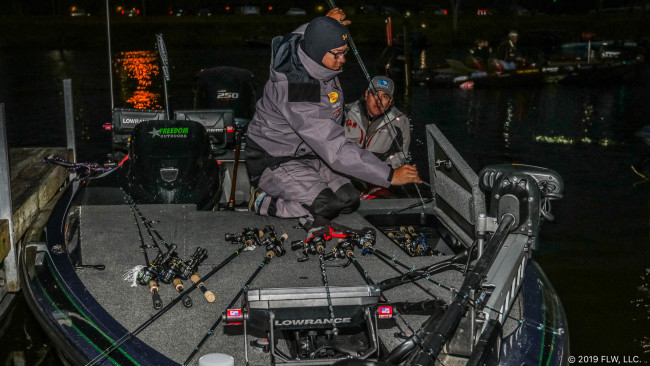
Tactics in play
There are a handful of ways to catch ’em on Okeechobee that produce year in and year out. Flipping and punching matted vegetation or standing reeds and cattails is the best way to hoist a trophy, but not the only way. Casting and reeling ChatterBaits, swim jigs, Speed Worms and Gambler Big EZ swimbaits over vegetation is the other primary tactic, but casting doesn’t tend to win as often as flipping. That being said, low water means less cover to flip, so don’t be surprised to see someone who's covering water take the title this week. Finally, throwing a lipless crankbait for schooling bass could play a bigger role than usual, as could dragging a Carolina rig around Okeechobee’s limited rocky structure.
Critical factors
- The mud: Finding clean water or a way to catch fish in muddy water is going to be super important this week. Because of the lack of truly clean water, cracking Okeechobee is a tougher task than usual.
- Pressure: Fighting through the crowd is often a factor in Florida, and this week the limited clear water might have pros more clustered than ever. Add in lower water and those fish can be spooked even easier.
- Warm weather: It’s been cold by Florida standards this year, and the water temperature reflects the trend. Bass want to spawn, but with water temps in the mid- to upper 50s, pros need the water to tick up almost 10 degrees to really spark a transition. It’s not likely to be a big-bass smash, but a few degrees warmer could trigger some early waves of fish to push shallow and help the bite overall.
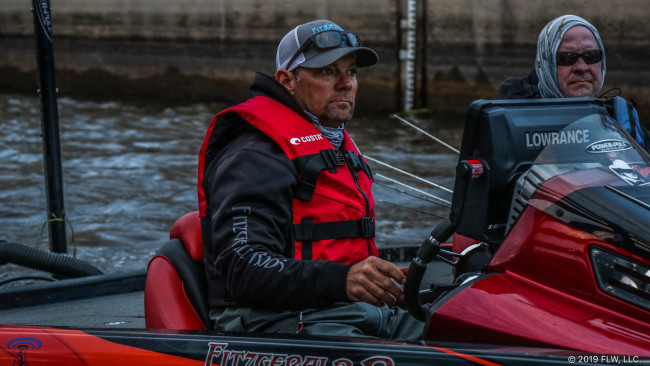
Dock talk
Most of the chatter at the registration meeting hints at a winning weight between 50 and 55 pounds. This is still Okeechobee where megabags exist, though it definately isn’t fishing at that level as of now.
“The lake is still really dirty and hasn’t fully recovered from the hurricane,” says Kyle Walters, 2018 Costa FLW Series Championship winner and Okeechobee aficionado. “The fish want to get up and spawn, but we’ve had cold snap after cold snap after cold snap this year. You can still catch fish in the typical places, but the fish are roaming more since there is less grass to hold them. I think we’ll see some off-the-wall stuff this week to catch fish.”
Another local with his finger on the pulse of Okeechobee is Robbie Crosnoe.
“What’s hurt the bite recently is the cold fronts and the water temperatures because of it,” Crosnoe explains. “We haven’t had a new wave of fish because the temps are around 60. When the water hits 68 degrees is prime time for this lake. We’re a few weeks out from that yet, but hopefully this warmer weather gets them going in the right direction.”
Tournament details
Format: All 238 boaters and co-anglers will compete for two days. The top 10 boaters and co-anglers based on cumulative weight after two days of competition will advance to the third and final round, with the winner determined by the heaviest cumulative three-day weight.
Takeoff Time: 7:00 a.m. ET
Takeoff Location: Roland & Mary Ann Martin’s Marina & Resort, 920 East Del Monte Ave., Clewiston, FL 33440
Weigh-In Time: 3:00 p.m. ET
Weigh-In Location: Roland & Mary Ann Martin’s Marina & Resort, 920 East Del Monte Ave., Clewiston, FL 33440